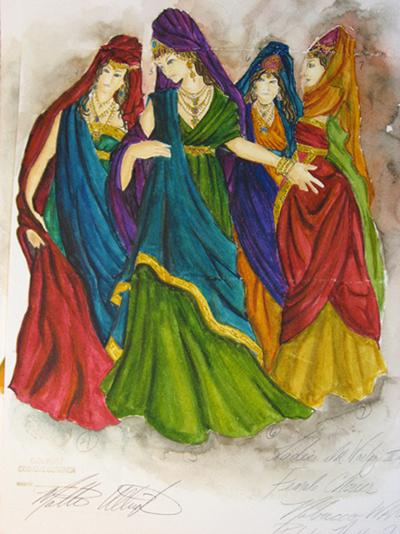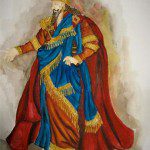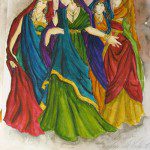‘Nabucco,’ Thou Shalt Be Known by Thy Lavish Costumes
By • June 18, 2012 0 4597

(To read the review of “Nabucco”, pick up the May 2nd issue of The Georgetowner)
Look at it any way you want–and there’s lots to look at–“Nabucco” is a big deal. It is also the nickname for Nebuchadnezzar II, he of the hanging gardens and destruction of Solomon’s Temple.
The source: the Bible and the clash between the ancient Israelites and the ancient Babylonians.
The story: rivals for a crown, queens and kings, illegitimate royals, love, sex and violence.
The music: One of Guiseppe Verdi’s greatest and first hits, this opera includes a famous chorus which became Italy’s unofficial national anthem.
The numbers: 250 costumes, eight principals, a chorus of 68, a cast of 115.
For the Washington National Opera, it’s a first-time production of the epic opera, directed by the electrifying young American Thaddeus Strassberger and conducted by Philippe Auguin, running April 28 through May 21 at the Kennedy Center’s Opera House.
For costume designer Mattie Ullrich, making her WNO debut, “Nabucco” is “a dream assignment.” “I love my job,” she says.
“One of the great things about this is that I’ve worked with Theodore before. So, we know a little bit about each other. So, we can communicate, ” said Ullrich. A vivacious, energetic and articulate redhead (“It’s starting to get a little dark,” she quipped), she likes a challenge.
“And Nabucco is a challenge,” she said. “I mean we have over 200 costumes. So, it’s quite an undertaking.”
“It’s an epic, that’s true, but you have to treat the costumes in individual terms,” she said. “They have to say something about who the characters are, what they do, their role and their personalities.” She moves easily from epic to intimate, from grand opera to off-Broadway plays and onto film.
“The first thing you do is listen to the music,” Ullrich said. “This is grand, big, operatic music. I immerse myself. I try to feel and memorize the music so that when you sit down, you have the story, the music memorized and you start to think about the characters, the people. That’s how the designs emerge. You think about what fabrics would work, how they look on people and the drawings and watercolors emerge. Then, you work closely with the talented people in the costume shop. You listen to them and their ideas.”
“When I was a young child, I saw a costume shop in a summer theatre at camp and I thought, ‘This is my playground.’ ”
Downstairs below, you walk through the various rooms, where — just a few days from the opening of the opera — it’s a little like whirling through a hallway full of hidden rooms and mirrors. Actors are getting fitted for flowing robes, a crown–designed by Ullrich–lies waiting, dark, green silk is draped over a mannequin, and the warrior-daughter’s breast plate sits waiting.
“The paintings emerge first,” she said. “Then, there’s the hunt for fabrics. I’m hands-on but not in the sense that I do the actual cutting, that’s where the dyers, the cutters, the drapers come in, the wonderfully talented people in the costume shop.” (Marsha Leboeuf is the WNO costume director.)
Down here, it’s a kind of magic–the way silk flows and folds, the dazzling (costume) jewelry, the crown, almost for real. Words hardly ever heard or spoken in most persons’ conversations: the lustrous sound of “silk chiffon,” for instance. It takes you back–thousands of years, in point of fact.
“It’s not Cecil B. De Mille, exactly,” she says. “It’s more soulful than that. But it is big.”
Her husband, John Sharp, runs a gastro pub, rich in high-end beer, called Birdsall House, named after a famous Scottish tavern. The couple live in New York.
“I like big operas like ‘Les Huguenots,’ but I just worked on a film, ‘Year of the Fish,’ that went to Sundance Film Festival,” she says.
Looking at some of the sketches and watercolors of the costumes, you can see her soulful, colorful work–costumes that shine with the music, hearts and soulful story of “Nabucco.”
- Nabucco Babylonian Women costume sketch by Mattie Ullrich




